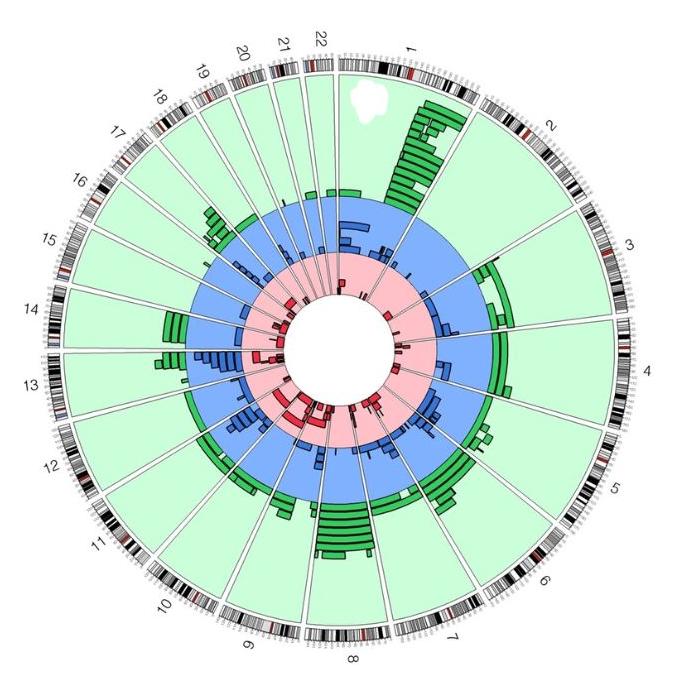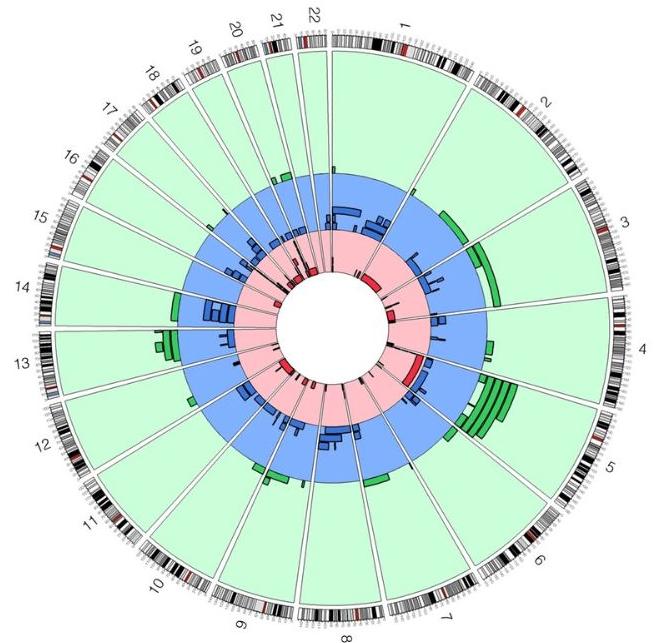Chromosomal Mosaicism May Influence Risk for Burkitt Lymphoma in Children from sub-Saharan Africa
, by Jennifer K. Loukissas, M.P.P.
A multi-disciplinary, international team of experts identified differences in the number of mosaic chromosomal alterations (mCAs) in children from sub-Saharan Africa with Burkitt lymphoma (BL), compared to children without BL. Similar patterns were observed in sub-Saharan African adults. These findings suggest a role for environmental factors in the frequency of mCAs in sub-Saharan African individuals and indicate mCAs in circulating leukocytes could have relevance for future BL risk. These novel findings were published in Nature Communication on December 6, 2023.
BL is an aggressive hematological malignancy of B cells. Risk for BL is driven by immune dysfunction in children with malarial infection and Epstein Barr virus, but little is known of how germline or acquired changes in DNA may affect risk.
mCAs are a type of clonal hematopoiesis detected in blood and characterized by large, structural copy number gain, loss, or copy-neutral loss of heterozygosity events in a subset of cells. Prevalence of mCAs generally increases with older age and is associated with an elevated risk of both chronic diseases and cancer, including leukemia.
Little is known about the prevalence or distribution of mCAs in peripheral blood leukocytes of individuals living in sub-Saharan Africa, including children at elevated risk for BL. In previous studies, BL has been associated with IG::MYC chromosomal translocations, which develop early and likely predispose children to this malignancy which is rare outside of this region.
The team used high-density genome-wide single nucleotide array data to investigate the role of large (>2MB) mCAs observed in blood-derived DNA of 931 children from sub-Saharan Africa with BL and 3,822 without BL (3,645 of whom were cancer-free). The children came from four countries in East Africa: Uganda, Tanzania, Kenya, and Malawi.
The investigators found a higher-than-anticipated frequency of mCAs in autosomal chromosomes in children without BL (3.4%) and elevated frequency in those with BL (8.4%). A similar pattern was observed for mCAs on the X chromosome. The relative frequency of mCAs in cancer-free children from sub-Saharan Africa was comparable to the rate in cancer-free adults aged 55-59 years of European ancestry in the U.S. The frequency of mCAs in cancer-free men from sub-Saharan Africa was at least 2-fold higher than in cancer-free European-American individuals of the same age.
BL cases were more likely to have gains on chromosomes 1q and 8, the latter spanning MYC, while those in BL-free children had losses on chromosomes 1, 10, 14, and 16. Among the cases, the investigators found no contamination of blood with tumor cells. In some instances, mCAs in the blood were also detected in the tumors, potentially tagging early clones.
The mechanism responsible for the higher frequency of mCAs in sub-Saharan African children is not known. Since children and adults living in Africa experience a high prevalence of chronic infections, including the oncogenic factors for BL, these exposures may trigger the development of mCAs, which may predispose children to malignancy.
The success of this study demonstrates the potential for scalable research in sub-Saharan Africa. Future research is needed to replicate these findings in populations with well-defined EBV and malarial phenotyping to clarify phenotypic associations and improve their generalizability. Additionally, longitudinal data for individuals with mCAs should be assessed to understand clonal expansion over time. Because the study was restricted to large mCAs identified from SNP array data, no inferences can be made regarding point mutations, translocations, or the frequency of clonal hematopoiesis of indeterminate potential, which should be considered in future studies using whole genome sequencing data.
Reference
Zhou W et al. Mosaic chromosomal alterations in peripheral blood leukocytes of children in sub-Saharan Africa. Nature Comm. 2023

